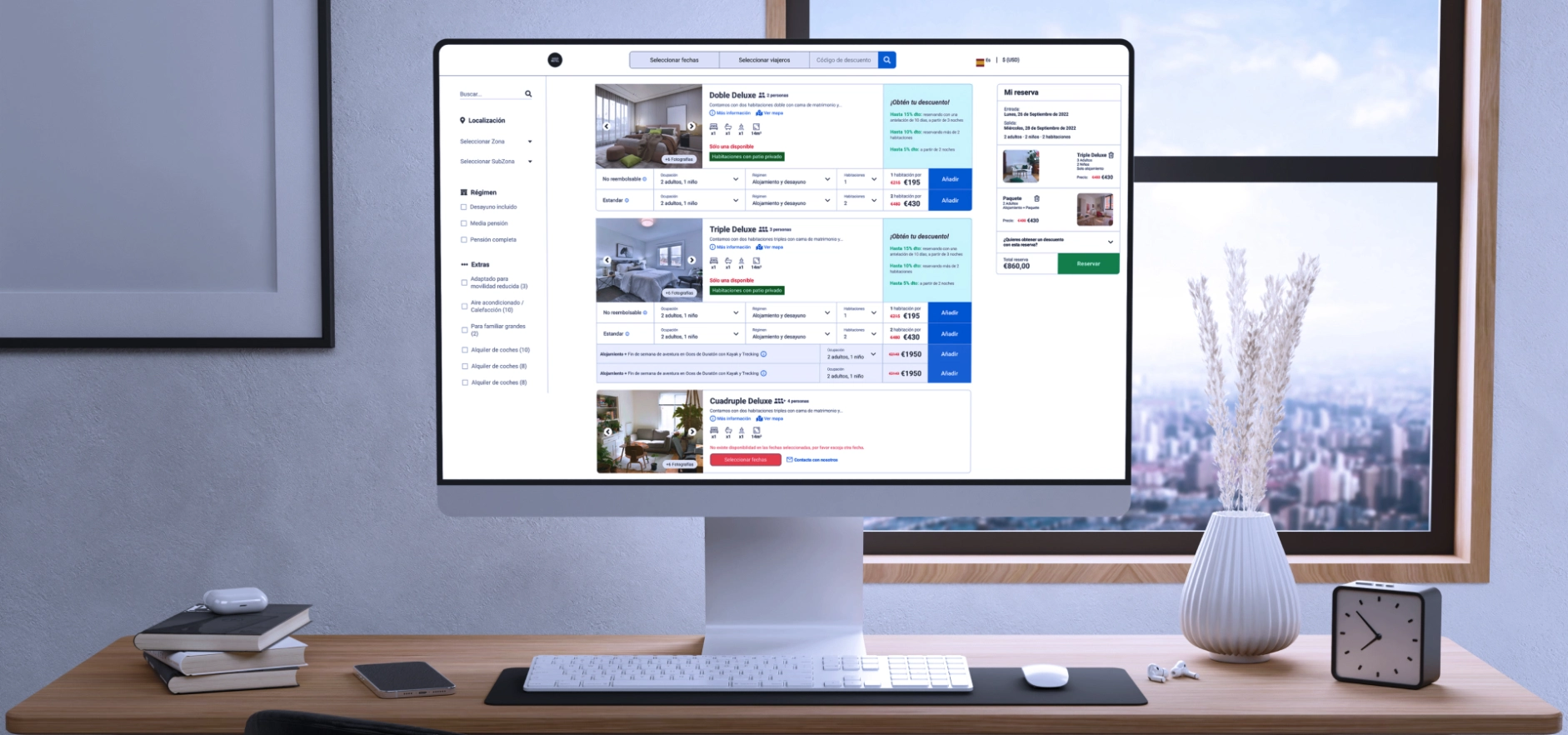
This project focuses on the development of a booking engine associated with a PMS SaaS software, focused on the hotel industry. The main objective is to provide a solution for customers to obtain direct reservations, without intermediaries charging commissions such as Booking.

This project of redesigning a user interface was an exciting and significant challenge. The main task was to focus the booking engine of a PMS SaaS software on direct sales, using marketing, sales, and UX tools to attract users' attention and facilitate the conversion process. The goal was to create an interface that would attract the user and guide them easily towards the reservation, increasing conversion rates and avoiding the use of intermediary platforms that charge commissions.
The main problem presented in the redesign of the hotel booking engine interface was the large number of elements on the screen, generating visual noise and confusion for users. Additionally, it was necessary to condense the information into smaller modules and modernize the visual aspect of the interface, as it had an outdated design and limited usability.
The challenge of this project was to create an interface that not only looked aesthetically attractive but also conveyed the excitement of traveling and staying in a dream hotel. We wanted users to feel inspired and excited when making their reservation, and to do so, we had to think beyond basic functionalities and create a unique experience that truly captivated users.
The solution to the booking engine interface problem was to implement a simple system with tools such as real-time filters and a shopping cart, attention-grabbing elements, and allowing the user to follow a single path to complete the reservation. We worked on improving the user experience (UX) and a cleaner, organic, and modern user interface (UI), achieving more intuitive navigation and more effective sales conversion.
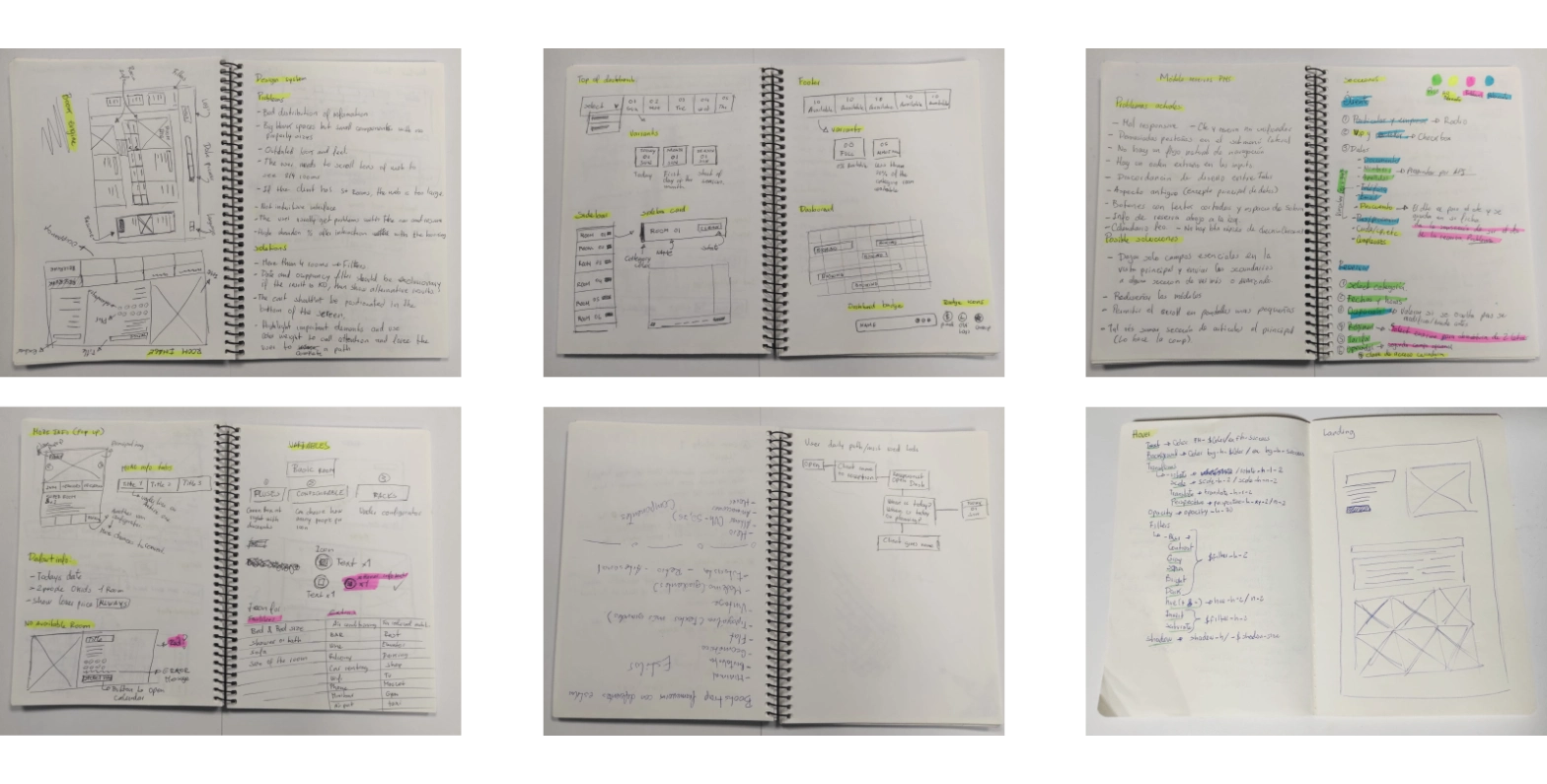
To approach the redesign of the booking engine, a thorough research was conducted regarding the best UX and UI practices in the hotel industry, and brainstorming sessions were held with the design team to find the best solution to the problem at hand. Several wireframes and prototypes were created and subjected to user testing to evaluate their effectiveness and gather feedback.
The decision was made to focus on a simpler and cleaner interface that used visual elements to grab the user's attention and guide them through the booking process. Efforts were made to organize the information to make it more easily accessible, and a real-time filtering system was created to help users find what they are looking for more quickly and easily. Additionally, a real-time cart was added so that users could see their selection of rooms and services more clearly and make changes at any point in the booking process.
Regarding the UI, a modern and clean design was chosen that reflected the client's brand, and an attractive color palette was used to catch the user's attention. Custom iconography was created to visually represent the services and features of each room, and careful implementation of the design was carried out to ensure that the user experience was consistent across all platforms.

During the redesign process of the reservation engine, a total of 15 user models were interviewed, who used the existing interface and offered their opinions and comments on it. During these interviews, several recurring problems were identified in the use of the interface, such as the difficulty in finding important information, the lack of clarity in the reservation processes, and the absence of user assistance tools. To address these issues, several improvements were implemented in the new interface, such as simplifying the navigation structure, including search and filtering tools to facilitate the location of important information, and creating a user guide. In addition, usability tests were conducted with real users to ensure that the new interface met their expectations and needs. In summary, the process of interviewing user models and listening to their opinions was crucial to the development of the reservation engine interface redesign. The implemented improvements allowed for a smoother and simpler user experience, resulting in an increased number of direct bookings and greater customer satisfaction.
To address these problems, a user-centered design solution was chosen, which focused on improving the usability and aesthetics of the system. A modern and clean graphical interface design was implemented, which allows for easy and efficient navigation for users. In addition, a relaxing color palette and an adaptable lighting system were incorporated, which reduces visual fatigue and provides a comfortable and enjoyable user experience.
In summary, the user study allowed for the identification of user problems and needs, which allowed for the development of a more intuitive, attractive, and functional hotel reservation management system.
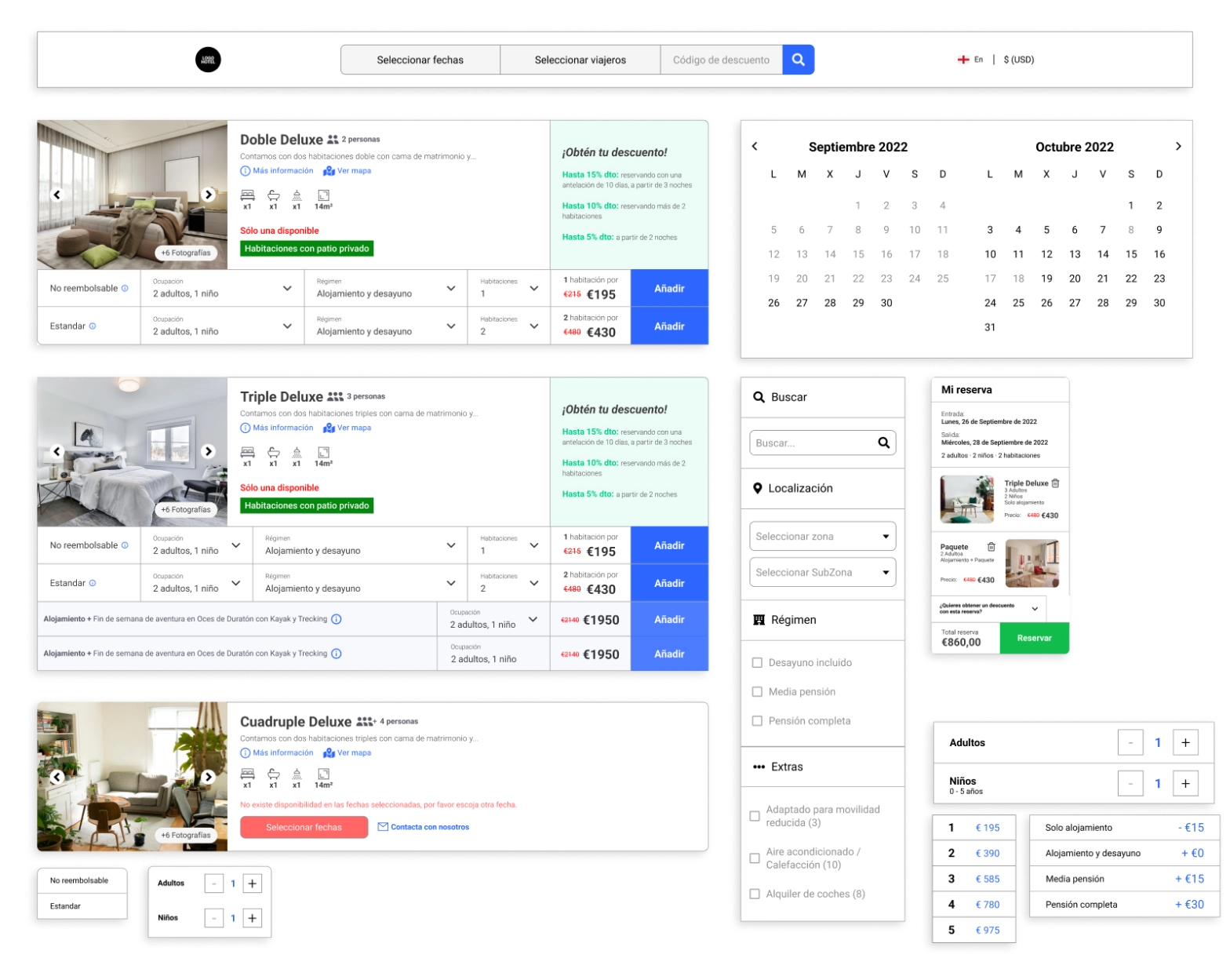
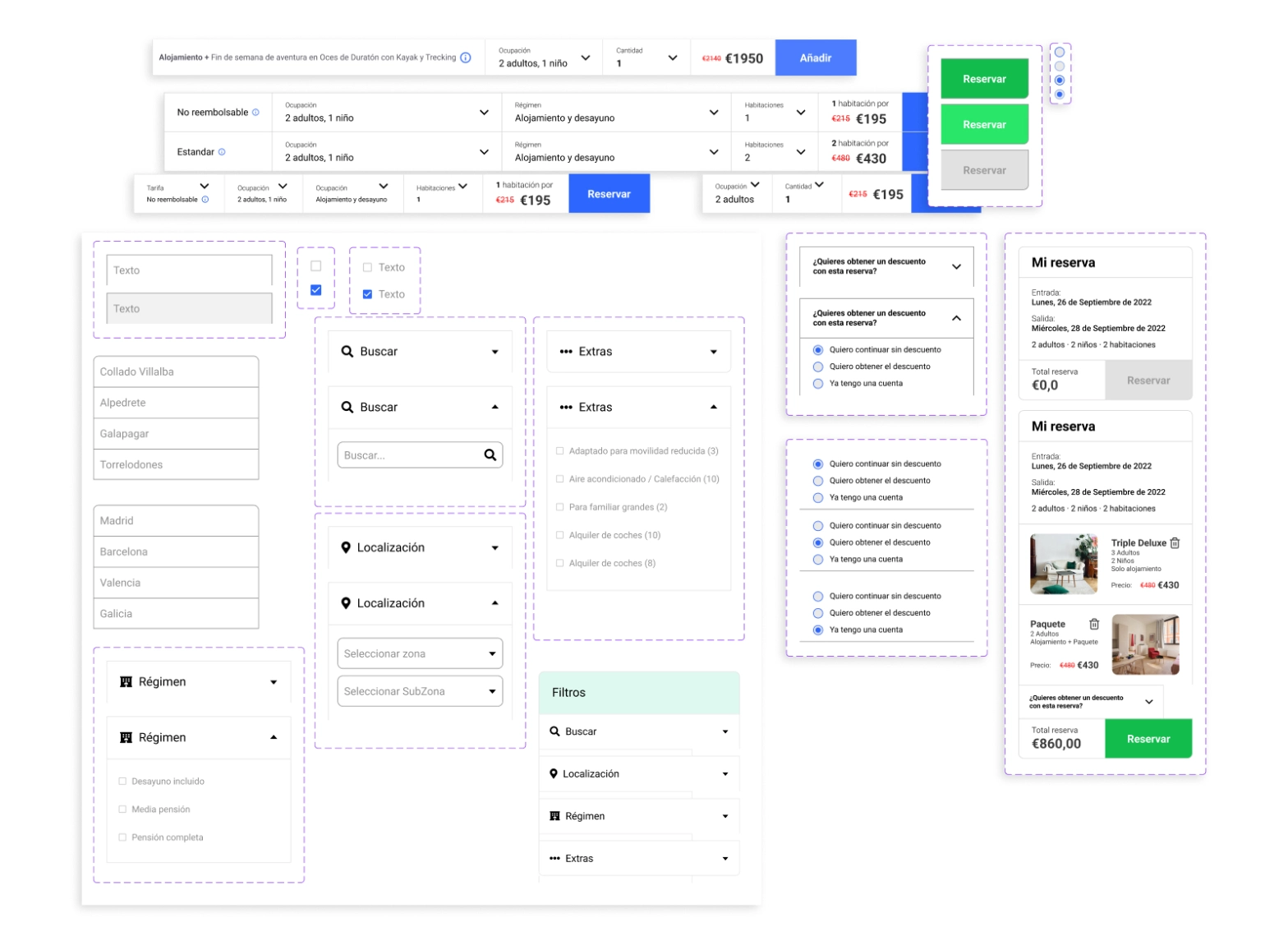
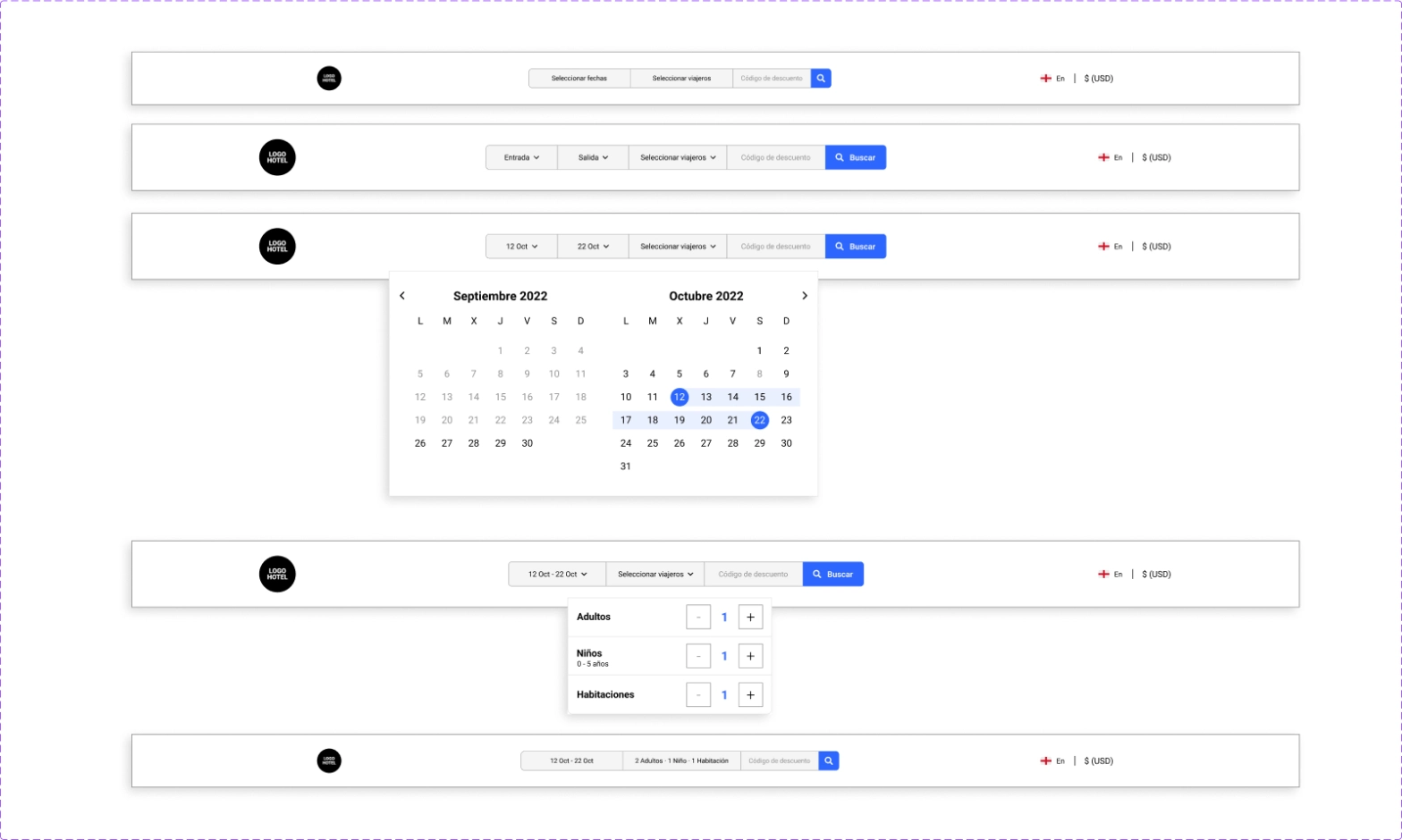


After several iterations and usability testing, we were able to develop a modern, clean, and effective interface for the hotel reservation engine. The improved design allowed for more intuitive navigation, reduced visual clutter, and improved the overall usability of the system, leading to an increase in direct bookings and user satisfaction.
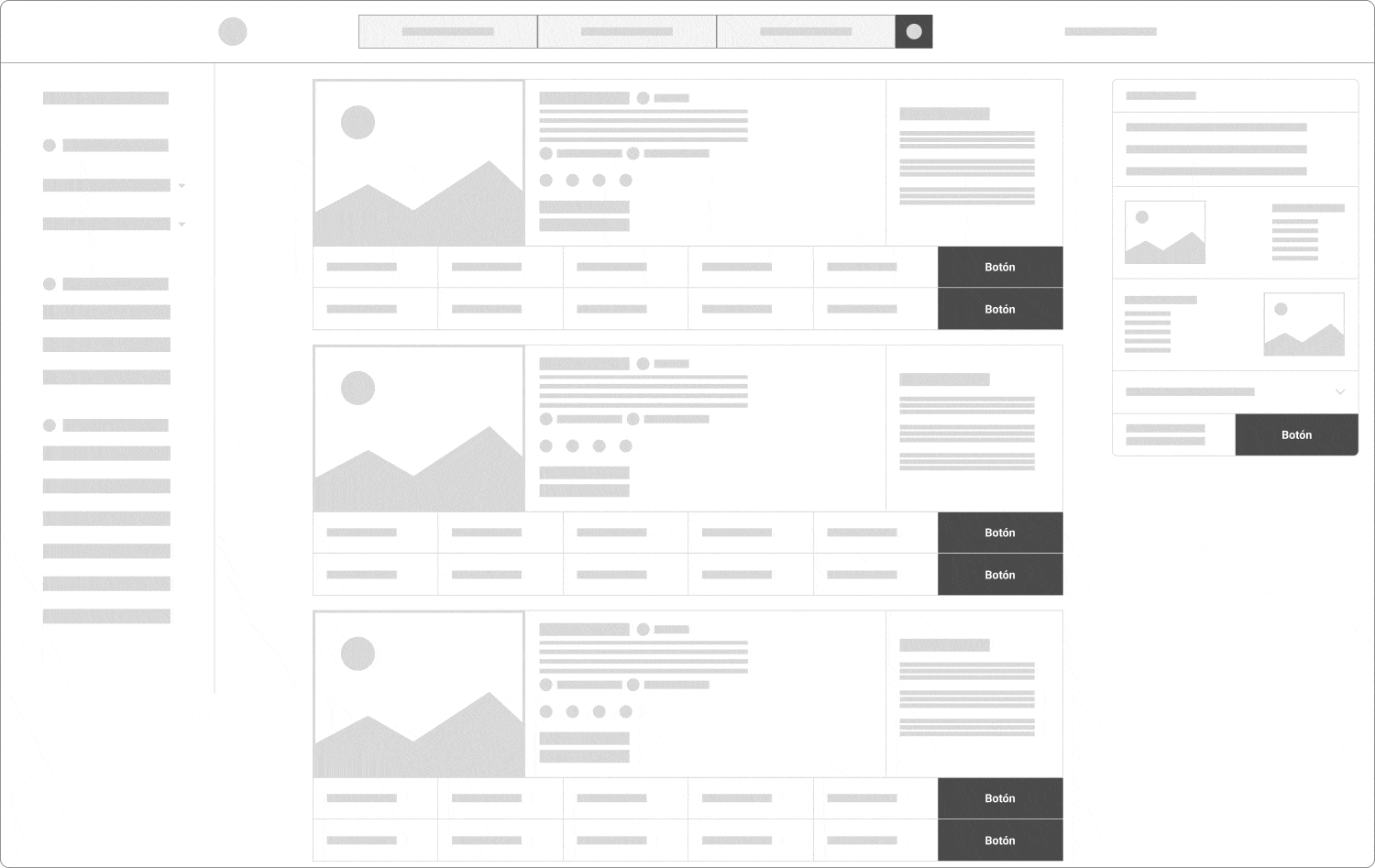
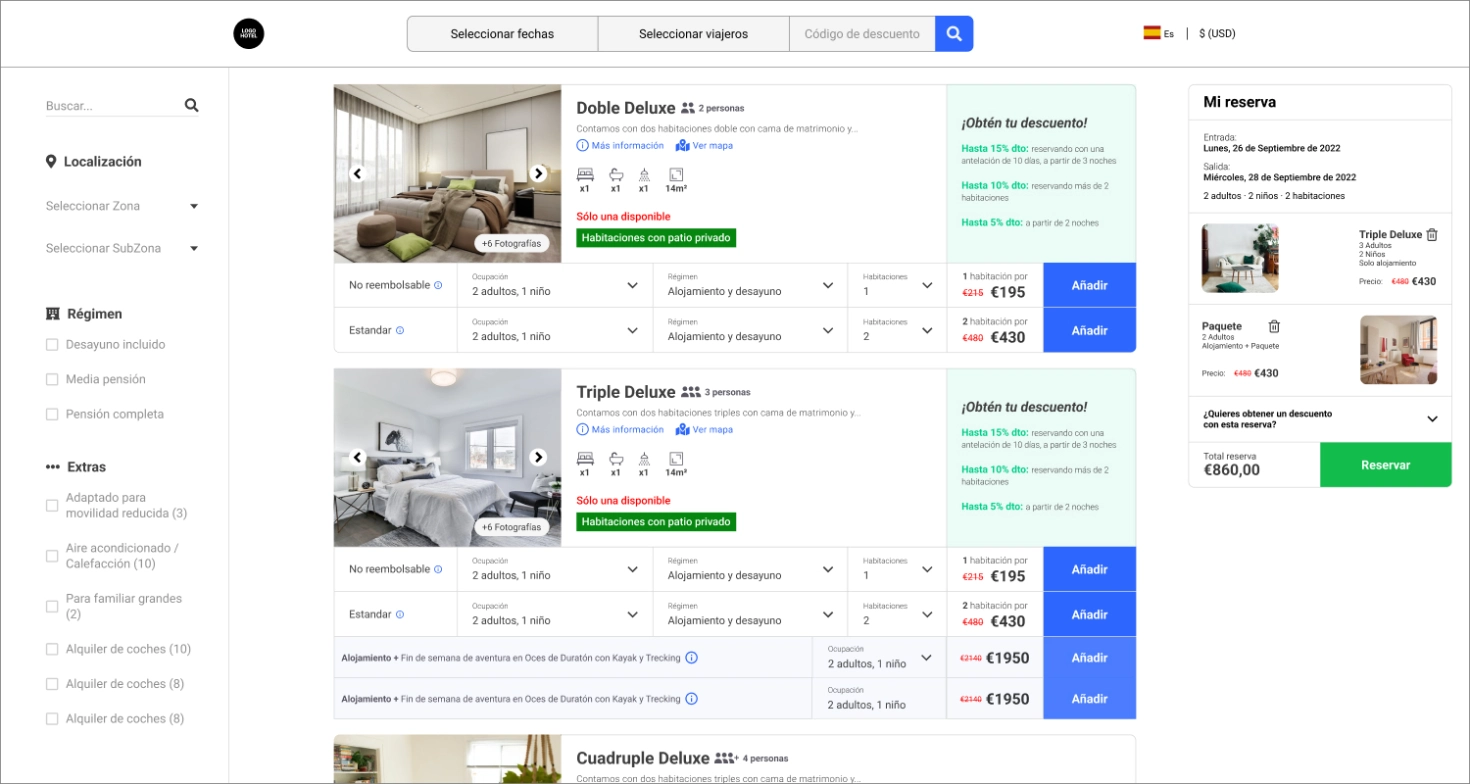
Ready to take your online presence to the next level? Contact us today for a personalized quote.
Fill out our form and let's start working together!